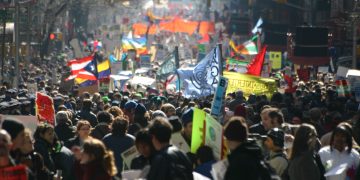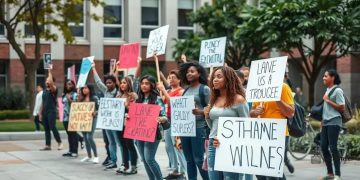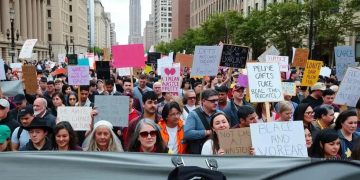April 2025 protests: understanding their impact
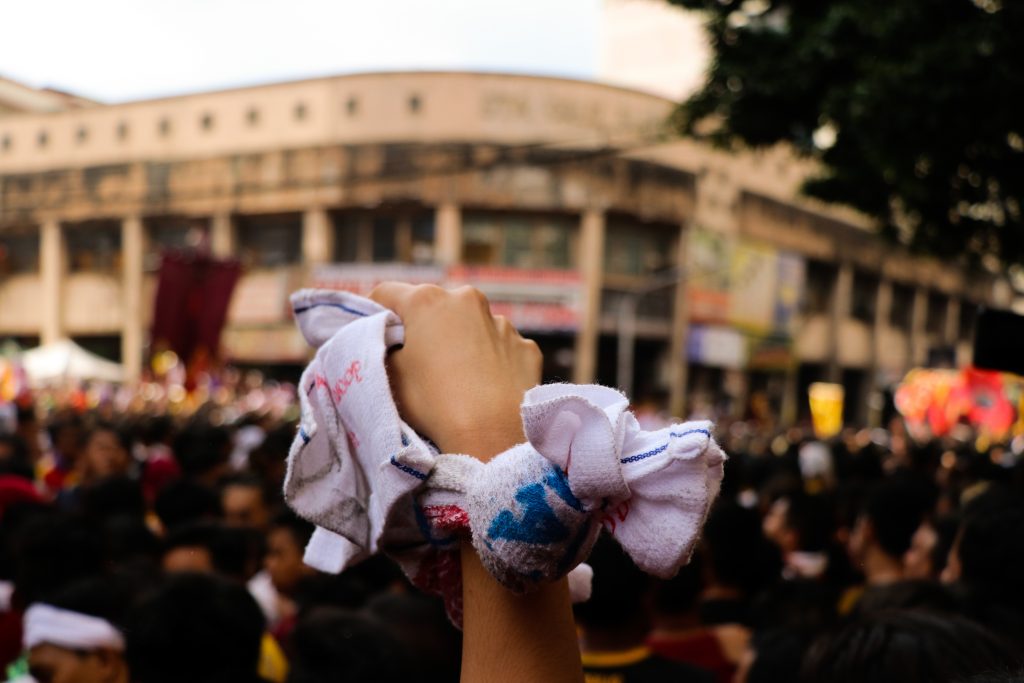
The April 2025 protests highlighted social inequality and government policies, leveraging social media for mobilization while emphasizing the need for unity, adaptability, and a focus on intersectional issues in future activism.
The April 2025 protests marked a significant moment in social activism, highlighting the power of collective action. Have you thought about how these movements influence our society?
Key reasons behind the April 2025 protests
The April 2025 protests emerged from various deep-seated societal issues. Understanding these key reasons is essential to grasp the movement’s significance and urgency.
Social Inequality
One of the primary drivers was the growing gap between different socio-economic classes. Many felt that wealth was increasingly concentrated at the top, leaving low-income families struggling. The frustration over limited opportunities fueled the protests.
Government Policies
Many protesters opposed recent government decisions that were perceived as unfavorable to the working class. These policies sparked outrage, particularly among young people seeking change.
- High unemployment rates among youth
- Increased taxation on lower-income individuals
- Cuts to essential public services
These decisions often felt like a betrayal to those who believed they were promised a better future.
The Influence of Media
The role of social media in mobilizing and organizing the protests cannot be understated. Platforms like Twitter and Instagram allowed real-time updates, making it easier for people to join forces. Additionally, social media raised awareness about injustice and helped amplify marginalized voices.
In bringing these issues to light, the protests challenged the status quo. They emphasized a collective demand for change that resonated with many citizens who felt unheard. The urgency of this movement highlighted how people are ready to fight for their rights, united by a common cause.
The demographics of the protesters
The demographics of the protesters during the April 2025 protests were varied and reflected a broad spectrum of society. Understanding who took part provides insight into the collective demand for change.
Age Groups
Protesters spanned many age groups, from teenagers to older adults. Much of the participation came from young people, particularly students, who were driven by strong feelings about their future. This younger generation felt that their voices needed to be heard.
- Majority were aged between 18-30
- Significant presence of high school and college students
- Older adults also participated, sharing experiences
This diverse age range highlighted how issues impacted all aspects of life, regardless of age.
Ethnic and Cultural Representation
The protests were marked by significant ethnic diversity. People from various backgrounds united under common causes, showcasing solidarity. This mix pointed to widespread feelings of marginalization felt across different communities.
By participating, they demonstrated not just a fight for their rights but also for a more inclusive society.
Geographic Spread
Many protesters came from urban areas where inequalities are more pronounced. However, there was also participation from suburban and rural communities. This showed how the issues at hand were not confined to one area but resonated broadly.
The varied demographics underscore the shared frustrations that brought these individuals together. United, they expressed a collective demand for change that transcended barriers and highlighted the importance of community solidarity.
Impact of social media on protest movements
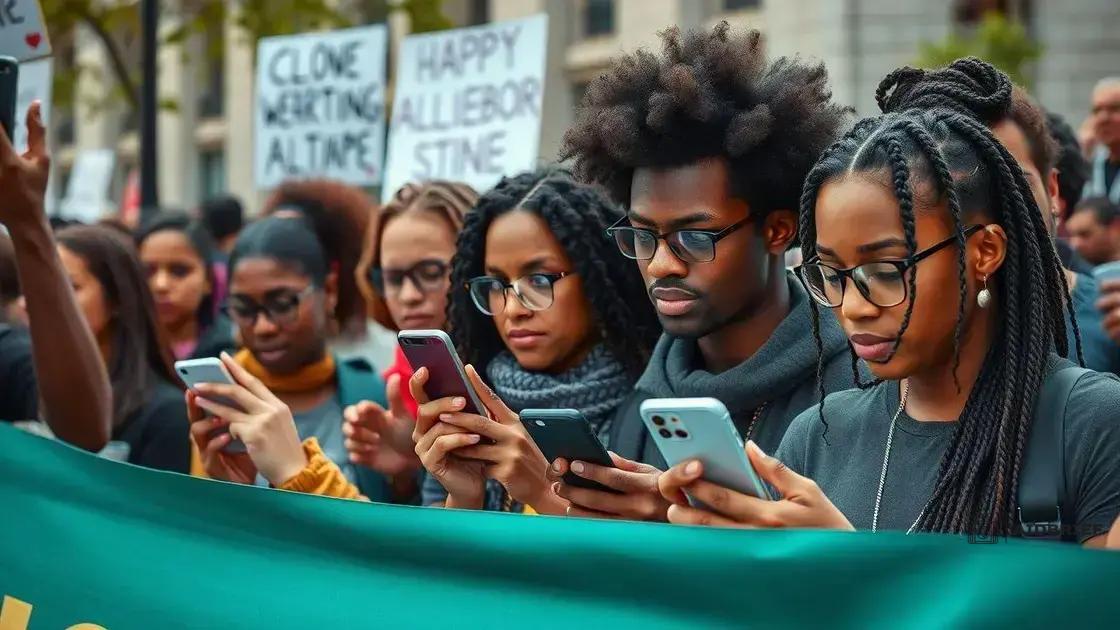
The impact of social media on protest movements has been profound, especially during the April 2025 protests. Social media platforms played a crucial role in mobilizing, organizing, and amplifying voices for change.
Real-Time Communication
Social media enabled real-time communication among protesters. Platforms like Twitter and Instagram allowed for instant updates, facilitating coordination of events. This immediacy helped spread the message quickly and efficiently.
- Participants could share locations for gatherings
- Live updates on police presence and safety
- Invitation to join through viral posts
This fast-paced information flow helped to enhance the movement’s visibility and urgency.
Raising Awareness
Social media also served as a tool for raising awareness about key issues. Many posts highlighted the issues that fueled the protests, shining a light on social injustices that often go unnoticed. Hashtags became rallying cries for those seeking change.
Furthermore, many influencers and public figures supported the movement by sharing their platforms. This helped bring attention to the protests on a larger scale, engaging more people in discussions about the relevant issues.
Creating Solidarity
Digital platforms fostered a sense of solidarity among protesters. Users shared personal stories, images, and videos showcasing the collective struggle. This sharing of experiences made it clear that many people were united in their demands for change.
Stories from different backgrounds illustrated the widespread discontent with social issues. As more individuals shared, the online community became a vital part of the physical protests occurring on the streets.
Lessons learned from the April protests
The lessons learned from the April protests are essential for understanding how social movements evolve. These protests provided insights into effective activism and community engagement.
Importance of Unity
One clear lesson was the power of unity. When people come together for a common cause, their voices resonate louder. This was evident as diverse groups united to stand against social injustices, illustrating that collective action can lead to significant change.
- Strength in numbers amplifies messages
- Solidarity creates a supportive environment
- Collaboration across different communities enhances impact
The strength of their unified voice showcased a clear message: together, they could demand attention and action.
Adaptability and Resilience
Another important lesson was adaptability. Protesters had to navigate various challenges, from law enforcement responses to changing narratives in the media. Those who adapted quickly were often more effective in spreading their message and maintaining momentum.
Moreover, the resilience demonstrated by participants highlighted their commitment to pressing issues. Even when faced with obstacles, many continued to push forward, showing determination.
Engaging with Broader Audiences
The protests also taught the value of engaging with broader audiences. Utilizing social media platforms allowed for outreach beyond traditional supporters. This engagement broadened discussions around critical issues, inviting more perspectives into the conversation.
By making information accessible and relatable, activists could reach individuals who may not have been directly affected but were sympathetic to the cause. This inclusivity helped strengthen the movement, ensuring it gained more support.
Future implications for activism
The future implications for activism are significant, especially in light of the events surrounding the April 2025 protests. These movements are reshaping how people engage and mobilize for change.
Increased Digital Activism
One major implication is the rise of digital activism. Protesters have learned to effectively use social media and digital tools to organize and spread their messages. This trend is likely to continue, leading to faster and more widespread mobilization.
- More engagement through online platforms
- Increased use of hashtags to raise awareness
- Ability to reach global audiences instantly
As technology evolves, so will the ways activists communicate and organize.
Focus on Intersectionality
Another key takeaway is the growing emphasis on intersectionality. Activists recognize the need to address various interconnected issues, such as race, gender, and socio-economic status. This broader focus helps to create more inclusive movements that resonate with a wider audience.
By tackling multiple aspects of inequality, activists can build broader coalitions and create a more impactful push for change.
Policy Change and Legislative Action
Future activism is also likely to influence policy changes. The activism from the April protests and similar movements signals to lawmakers that the public is engaged and demanding action. As a result, we may see more responsive policies aimed at addressing social issues.
This pressure from activists can lead to significant shifts in how policies are crafted and implemented. Grassroots movements are expected to play a vital role in shaping the legislative landscape.
FAQ – Frequently Asked Questions about the April 2025 Protests
What were the main causes of the April 2025 protests?
The protests were driven by social inequality, government policies, and the urgent need for reform in various areas.
How did social media influence the protests?
Social media allowed real-time communication, helped raise awareness, and connected diverse groups, amplifying the movement’s message.
What lessons were learned from the protests?
Key lessons include the importance of unity, adaptability in activism, and the need for focusing on intersectional issues.
What are the future implications for activism?
Future activism may see increased digital engagement, a broader focus on social issues, and a stronger push for policy changes.
